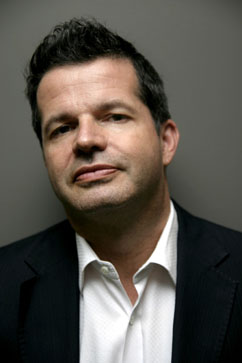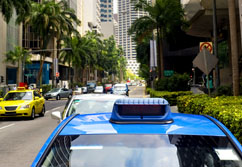Competition, complaints, changes, and even government intervention has caused a bit of a shake up in the transport sector in the last year.
On 29 March, ride-hailing app Grab will introduce the new JustGrab service. It will provide commuters access to not only Grab’s own fleet of hire cars but also to taxis from SMRT, Trans-cab, Premier, Prime, and HDT.
The service will use a dynamic pricing model where a fixed fare, which will be shown before the booking is made, will be adjusted according to market supply and demand.
Dynamic pricing will effectively replace the traditional taxi surcharges like midnight and CBD charges, when booked via JustGrab.
Grab promises that this will result in lower prices at low demand periods. However, during periods of high demand, prices are expected to rise, similar to the surge pricing models that Grab and Uber already employ for their hire car services.
Industry big boy Comfort DelGro has chosen to go its own way, and says that it will roll out a new service via its own taxi booking app in the coming month.
Grab says that pooling resources between hire car services and taxis is the way forward to solving the urban mobility issues in Singapore. But it also looks like this might be a lifeline extended to the much maligned taxi industry. Taxi operators have not had an easy ride over the last year, as they try to contend with the stiff competition from Grab and Uber. Affording them some access to Grab’s app customer may just be one way of bringing taxis back into the fold.
What do these changes mean for taxi operators and, more importantly, to commuters?
[thb_gap height=”20″][thb_dividers style=”style7″][thb_gap height=”10″]
Html code here! Replace this with any non empty text and that's it.
Guy Hearn, Chief Innovation Officer, Omnicom Media Group
There’s no doubt that Uber and Grab have shaken up the Singapore transport market, mostly in a positive way. Before their entry into the market taxis, although cheap, compared to overseas markets, had two big downsides. Firstly, over the years it had become increasingly difficult to get a taxi during peak periods, or during bad weather. Friday night waits of up to two hours from the CBD were not unusual. Secondly, the ridiculous system of “shift change” where taxis would cruise the CBD between 3pm and 4pm in the afternoon looking for passengers  going to destinations near their base, making Singapore notorious amongst expats for being the country where the cab driver told you where he and she was going, rather than vice versa!
going to destinations near their base, making Singapore notorious amongst expats for being the country where the cab driver told you where he and she was going, rather than vice versa!
Uber and Grab have changed all that. Now you can virtually always get a ride. And whereas in many countries taxi operators have simply complained about the disruption unlicensed taxi services have caused, in Singapore the taxi operators have responded positively.
I use Comfort DelGro taxis most days; the booking experience already feels very much like Uber. You can track your taxi, store your favourite routes and rate your driver. But for me, the advantage of Comfort is that the drivers are licensed professionals. That doesn’t mean all are good drivers of course, but it does mean that they have some qualifications to drive a taxi, as opposed to hire-car services.
However, I find the news of the new dynamic pricing structure being introduced by SMRT, Trans-cab, and others, puzzling.
It makes sense for Uber. Higher prices mean a greater incentive for amateur drivers to get on the road; many customers are willing to pay extra to get to where they need to go. That certainly apples to me — I am quite happy to pay two or three times the fare to get to where I need to.
Dynamic pricing is a win-win for all. But for a taxi driver it seems to make less sense; they are on the road anyway, looking for fares.
Dynamic pricing doesn’t get more taxis on the road or otherwise create more capacity. It might, potentially, encourage more taxis into congested areas like the CBD, helping to increase capacity there. But that is only at the cost of reducing capacity elsewhere.
The ‘new’ fleet will reportedly include 10,600 vehicles. That is the maximum capacity that will not change, regardless of pricing. Furthermore fixed pricing is one of the benefits encouraging consumers’ to use taxis; if you take away that benefit why shouldn’t I use Uber — or more likely simply price compare between the services, thus commoditizing them
The real objective therefore must be to improve the reward to the driver – and I have no problem with that. As I say, taxis in Singapore are cheap and drivers are not well paid. But otherwise I predict that the new dynamic pricing will create many complaints; its fine for Uber to charge according to conditions. It’s not fine for a taxi to do so!
Arti Mulchand, Director, Word of Art
Singapore taxi commuters held the short end of the stick for many years until Grab and Uber came along and shook things up. With the provision of a platform that more effectively matches supply to demand, we suddenly have the luxury of choice.
We used to be at the mercy of taxi companies that were resting on their laurels because they didn’t have much by way of competition. The arrival of hire car platforms have forced these companies into paying attention to demand and supply, consumer pain points, and the impact consumers switching services is having on their drivers/bottom line.
Grab has also done a great job in getting folks hooked on their promos, and being able to choose between pricing options depending on the type, time and duration of the journey. I use GrabShare when I’m not in a rush, as well as when the promo code makes it silly not to.
Price-wise, Grab has made commutes even more affordable. I now use street hails only about 30% of the time, and book cars/taxis the rest of the time. I will admit that I have sometimes been at a taxi stand that has taxis waiting, but an available code makes booking a car/taxi the better option. Ultimately, I think the deciding factor is always price — and the options allow consumers to make a more informed choice.
We used to have this problem with taxis “hiding” just before peak hour or before midnight surcharges kicked in, or cruising while waiting for a call and cherry picking passengers for short rides in the hope that a higher priced booking would come in. I fear that the availability of dynamic pricing for taxis is going to just bring that back, whatever Grab says about sensibility prevailing. Commuters for whom street hails are the more affordable option are most likely going to be affected. On the other hand, it’s hard to fault taxi drivers for trying to improve their hourly yield.
As it stands, I avoid surge priced hire cars, and usually opt for a metered taxi. If they now jump on that surge pricing bandwagon, I might simply modify my commuting behaviour to avoid it when I can. Comfort DelGro’s response may yet provide more options.
If taxis start pegging themselves to the rates Grabcar/Uber uses, then I’ll have to find creative ways around using those services.
Albert Liang, Taxi Driver
It has been a difficult time for us — taxi drivers face competition from Uber and Grab on a daily basis. In the last few years, we have experienced a loss of passengers. This translates to a loss of little more than three rides per shift or a loss of $30 – $50 a day.
Wages in other industries have been rising but when was the last time fares were revised?
Even with the entry of hire car services into the market, fares have not been revised for at least four years. On the other end, costs have not stopped increasing. While there have been some changes in the last year, rentals are still high. Recently, operating costs have increased following Budget 2017 — price of diesel has gone up 10 cents to $0.80 per litre (subsidised for taxi drivers).
Commuters often complain that taxis are “hiding”. Nowadays, drivers find that the passengers go into hiding after 8 pm!
Long queues of taxis waiting for passengers at taxi stands are a very common scene today.
JustGrab will mitigate the inflexibility of the taxi fare system. The 10,600 taxis on the platform will be forced by circumstance to accept lower fares during off-peak hours. But 90% of something is better than 100% of nothing. This will become the new normal. I believe JustGrab’s dynamic pricing will probably lower the fare. The surge pricing will only be in effect during super peak demand that only lasts about two hours a day.
JustGrab will give taxi drivers a way to compete with hire car services. Certainly, taxi drivers will initially be hesitant to use it, but eventually the reality will set in and they will be forced to accept it. Commuters will definitely be happy with the additional options, especially when they are more likely to pay lower fares too.
There has already been a lot of talk of how taxi drivers will exploit the dynamic pricing model. I doubt that will happen, in fact, I believe street hails will become hotly contested. As the cut that Grab is expected to take from JustGrab rides weighs on drivers’ minds, street fares will become more attractive to drivers. Comfort DelGro has yet to announce a response, so in the short-time, they will also be hungry for street fares. It does look good for taxi drivers at the moment, giving us access to a new customer base.
Mark Ho, Taxi Driver
Grab has really one-upped Uber with this new service — it has given them 10,600 more vehicles that their users can call upon.
Unfortunately, I don’t drive for one of the JustGrab partners so I fear that I have lost another source of income from taxi bookings. At the moment, I get 70% of my bookings via the Grab app; this number will take a hit once JustGrab is fully operational.
I am expecting an income drop in coming months.
This is only the start of the changes; I wouldn’t be surprised to see the introduction of a taxi sharing option in the near future, much like UberPOOL and GrabShare. This will see more customers flock to the Grab platform; they may soon enjoy a monopoly on the market.
It would not be surprising to see other taxi operators implementing similar surge pricing schemes. However, I doubt it will be as high as twice or thrice the regular fare for fear of losing more customers. I predict other operators may implement an additional surcharge of $5 (or so) in times of high demand.
If Comfort DelGro, currently not part of JustGrab, wants to make a move on the market, they should do away with surcharges and have flat rate fares too. They also desperately need to update their app to match the functionality and usability that Grab offers. There needs to be more promotions, following the lead of Grab and Uber, and be more aggressive about it — only then will the current market giants stand a chance.
Comfort DelGro might be in the lead now but if they are still in dreamland, they will be on the edge of no return! The onslaught is real!
They are at present fighting a war without bullets for fear of their share price dropping but wars must be fought and won.

Swapna Mitter, Director, Writers Block
The existing taxi services are still ok, but it is not without its pitfalls.
It is getting more and more difficult to hail a taxi on the road. And waiting times have also become longer. Pricing, especially with surcharges, can be quite high too.
That’s one good thing about dynamic pricing; at least one will know exactly how much the trip will cost. But I doubt it’s going to be cheaper than the current tariff structure, especially during peak hours.
I still use taxis, GrabTaxi in particular, most of the time. For one, I have a small child and there’s a car seat rule that applies to private cars, but not to taxis. I also find that regular taxi drivers are better acquainted with roads/landmarks. The private car drivers depend on GPS directions, which can be tricky at times.
I’ve been using Grab more and more in the last year-and-a-half so I think JustGrab will be a welcome change — as long as pricing is competitive. It will be another option to consider, especially when GrabCar and GrabShare prices are inflated due to surge pricing. The fixed-rate price has its advantages but if it is significantly higher, I won’t opt for it.
Taxis are still going to be here, it’s just they are opting to go for a different pricing structure. And I’m sure we will all continue to queue up to take a taxi, perhaps the queues will be shorter. Which is a good thing!
Hopefully fewer taxi drivers will refuse to take you or suddenly change their signs to ‘on call’ when you are trying to hail a ride.
You might also want to read:
Is Singapore A Sporting Nation?
Can Singapore Cultivate Music Talent?
Main Image: Belozorova Elena / Shutterstock.com
[poll id=”43″]






















